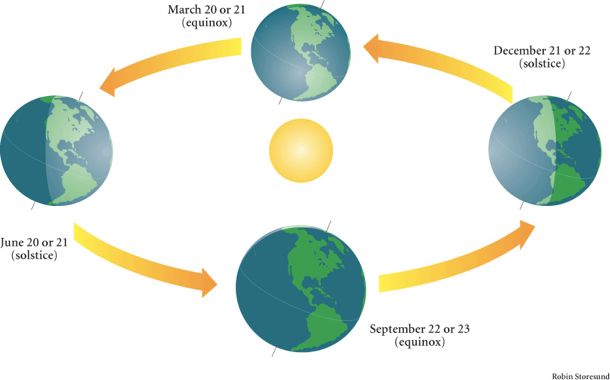From Earthsky.org – The March equinox signals the beginning of spring in the Northern Hemisphere and autumn in the Southern Hemisphere. It marks that special moment when the sun crosses the celestial equator going from south to north. In 2013, this equinox will arrive on March 20 at 7:02 a.m. EST. The equinox is an event that happens in Earth’s orbit around the sun. Simultaneously, it happens on the imaginary dome of our sky. The imaginary celestial equator is a great circle dividing the sky into Northern and Southern Hemispheres. The celestial equator wraps the sky directly above Earth’s equator. At the equinox, the sun crosses the celestial equator, to enter the sky’s northern hemisphere.
Our ancestors didn’t understand the equinoxes and solstices as events that occur in the course of Earth’s yearly orbit around the sun. But they surely marked today as being midway between the sun’s lowest path across the sky in winter and highest path across the sky in summer. Today, we know each equinox and solstice is an astronomical event, caused by Earth’s tilt on its axis and ceaseless motion in orbit.
Because Earth doesn’t orbit upright, but is instead tilted on its axis by 23-and-a-half degrees, Earth’s Northern and Southern hemispheres trade places in receiving the sun’s light and warmth most directly. We have an equinox twice a year – spring and fall – when the tilt of the Earth’s axis and Earth’s orbit around the sun combine in such a way that the axis is inclined neither away from nor toward the sun.
At the equinox, Earth’s two hemispheres are receiving the sun’s rays equally. Night and day are approximately equal in length. The word equinox comes from the Latin aequus (equal) and nox (night).
You can read more here.
Follow our occasional Tweets @WinterCampers and visit us on Facebook.
SHARE
March 20th, 2013 | Category: Nature & Outdoors
Comments are closed.


